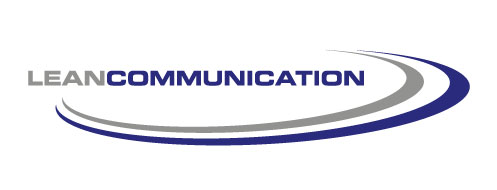Lean Communication: Pull
In lean manufacturing it’s called kanban, or pull. Rather than pumping out tons of inventory in the hope that someone will buy it, the producer makes what’s needed as needed, when the customer asks for it. This prevents the buildup of inventory which costs money, takes up space, and leads to frequent mismatches between what’s needed and what’s available.
The same thing happens in communications. Most speakers, whether presenting or in a conversation, give their listeners more than they need. For example, how often do you read to the end of an article such as this one? One indication of the amount of waste in the typical communication is that most people don’t “consume” 100% of what is expressed. But here’s the problem. It’s like what John Wanamaker said about advertising: “Half the money I spend on advertising is wasted; the trouble is, I don’t know which half.”
How do you know what they need?
You can try to narrow it down by knowing your audience, but you will never know for sure. It’s like a company that introduces a new product. Despite focus groups and pilots, most new product launches fail. The only way to know a product will work is to put it out there and see what sells. As a speaker, you want to follow the same approach, but the good news is that it doesn’t cost you as much, and you can pivot quickly when you note that something isn’t selling.
How does pull work in communication?
You give the bare minimum needed for the listener to get your gist, and then add as necessary. It’s like a newspaper article. The headline gives you the point of the story (if it’s written correctly), and then the first paragraph (what journalists call the nut graf) encapsulates the story in one easily digestible piece. Sometimes that’s enough, but often it sparks curiosity or drives additional questions. You may worry that too much pull will cause you to lose control, but that’s a lot less likely if you are perfectly clear about your main point and structure right up front.
When I coach clients on how to present to executives, they often complain that they barely get past the first slide of their carefully crafted presentation before they are peppered with questions from the audience. I tell them that, within limits, that’s a good thing. It’s kanban communication in action—they know that they are targeting what their audience wants and needs to hear. Especially when presenting to impatient senior executives, you should always be prepared for them to take control of your presentation. When they ask the question, you can bet they will listen to the answer.
Pull communication solves the problem of tailoring your presentation to the knowledge level and interests of your listeners. You may begin with a detailed explanation of the problem only to find out that your audience already knows about it and is impatient to get to your recommended solutions, for example.
Pull also affects the level of detail on your slides. Keep it limited to headlines and a few keywords and visuals for support, and have additional detail available on backup slides just in case. Nothing makes you look better prepared and more considerate of your audience than responding to a difficult question by pulling up just the information needed just when it’s needed.
Of course, pull won’t work if you’re not actively paying attention to your listeners and inviting questions as you’re talking, which of course is another reason to keep it simple at the start.
In the early 80s there was a major controversy between advocates of supply-side and demand-side economics, and I’m not even sure which side was proven right. I do know, however, that demand-side works wonders in lean communication.





[…] The analogy for communication is to give them the bare minimum you think they need, and let them pull out additional information through questions if they need it. Or, supposing you have seven benefits to talk about, give them […]